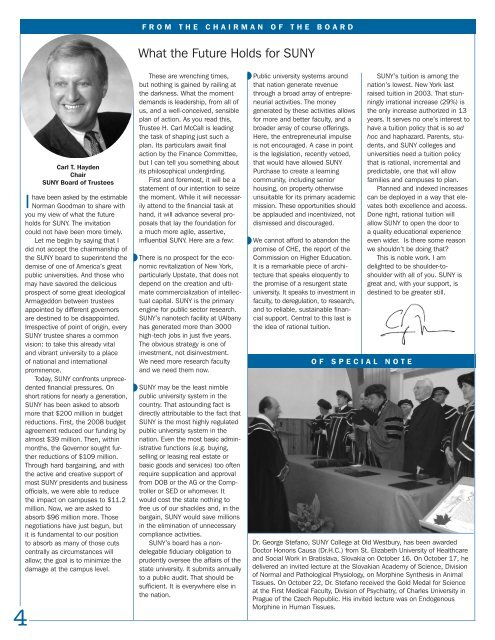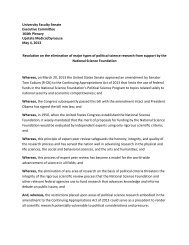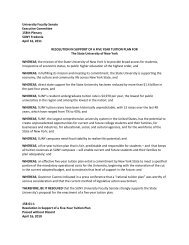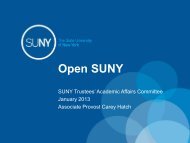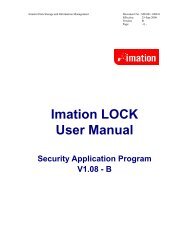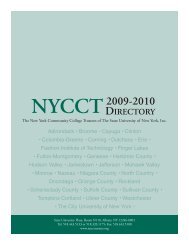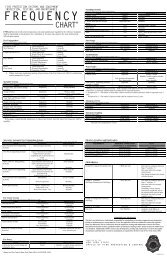Layout 1 copy - The State University of New York
Layout 1 copy - The State University of New York
Layout 1 copy - The State University of New York
Create successful ePaper yourself
Turn your PDF publications into a flip-book with our unique Google optimized e-Paper software.
F R O M T H E C H A I R M A N O F T H E B O A R D<br />
What the Future Holds for SUNY<br />
4<br />
Carl T. Hayden<br />
Chair<br />
SUNY Board <strong>of</strong> Trustees<br />
Ihave been asked by the estimable<br />
Norman Goodman to share with<br />
you my view <strong>of</strong> what the future<br />
holds for SUNY. <strong>The</strong> invitation<br />
could not have been more timely.<br />
Let me begin by saying that I<br />
did not accept the chairmanship <strong>of</strong><br />
the SUNY board to superintend the<br />
demise <strong>of</strong> one <strong>of</strong> America’s great<br />
public universities. And those who<br />
may have savored the delicious<br />
prospect <strong>of</strong> some great ideological<br />
Armageddon between trustees<br />
appointed by different governors<br />
are destined to be disappointed.<br />
Irrespective <strong>of</strong> point <strong>of</strong> origin, every<br />
SUNY trustee shares a common<br />
vision: to take this already vital<br />
and vibrant university to a place<br />
<strong>of</strong> national and international<br />
prominence.<br />
Today, SUNY confronts unprecedented<br />
financial pressures. On<br />
short rations for nearly a generation,<br />
SUNY has been asked to absorb<br />
more that $200 million in budget<br />
reductions. First, the 2008 budget<br />
agreement reduced our funding by<br />
almost $39 million. <strong>The</strong>n, within<br />
months, the Governor sought further<br />
reductions <strong>of</strong> $109 million.<br />
Through hard bargaining, and with<br />
the active and creative support <strong>of</strong><br />
most SUNY presidents and business<br />
<strong>of</strong>ficials, we were able to reduce<br />
the impact on campuses to $11.2<br />
million. Now, we are asked to<br />
absorb $96 million more. Those<br />
negotiations have just begun, but<br />
it is fundamental to our position<br />
to absorb as many <strong>of</strong> those cuts<br />
centrally as circumstances will<br />
allow; the goal is to minimize the<br />
damage at the campus level.<br />
◗<br />
◗<br />
<strong>The</strong>se are wrenching times,<br />
but nothing is gained by railing at<br />
the darkness. What the moment<br />
demands is leadership, from all <strong>of</strong><br />
us, and a well-conceived, sensible<br />
plan <strong>of</strong> action. As you read this,<br />
Trustee H. Carl McCall is leading<br />
the task <strong>of</strong> shaping just such a<br />
plan. Its particulars await final<br />
action by the Finance Committee,<br />
but I can tell you something about<br />
its philosophical undergirding.<br />
First and foremost, it will be a<br />
statement <strong>of</strong> our intention to seize<br />
the moment. While it will necessarily<br />
attend to the financial task at<br />
hand, it will advance several proposals<br />
that lay the foundation for<br />
a much more agile, assertive,<br />
influential SUNY. Here are a few:<br />
<strong>The</strong>re is no prospect for the economic<br />
revitalization <strong>of</strong> <strong>New</strong> <strong>York</strong>,<br />
particularly Upstate, that does not<br />
depend on the creation and ultimate<br />
commercialization <strong>of</strong> intellectual<br />
capital. SUNY is the primary<br />
engine for public sector research.<br />
SUNY’s nanotech facility at UAlbany<br />
has generated more than 3000<br />
high-tech jobs in just five years.<br />
<strong>The</strong> obvious strategy is one <strong>of</strong><br />
investment, not disinvestment.<br />
We need more research faculty<br />
and we need them now.<br />
SUNY may be the least nimble<br />
public university system in the<br />
country. That astounding fact is<br />
directly attributable to the fact that<br />
SUNY is the most highly regulated<br />
public university system in the<br />
nation. Even the most basic administrative<br />
functions (e.g. buying,<br />
selling or leasing real estate or<br />
basic goods and services) too <strong>of</strong>ten<br />
require supplication and approval<br />
from DOB or the AG or the Comptroller<br />
or SED or whomever. It<br />
would cost the state nothing to<br />
free us <strong>of</strong> our shackles and, in the<br />
bargain, SUNY would save millions<br />
in the elimination <strong>of</strong> unnecessary<br />
compliance activities.<br />
SUNY’s board has a nondelegable<br />
fiduciary obligation to<br />
prudently oversee the affairs <strong>of</strong> the<br />
state university. It submits annually<br />
to a public audit. That should be<br />
sufficient. It is everywhere else in<br />
the nation.<br />
◗<br />
◗<br />
Public university systems around<br />
that nation generate revenue<br />
through a broad array <strong>of</strong> entrepreneurial<br />
activities. <strong>The</strong> money<br />
generated by these activities allows<br />
for more and better faculty, and a<br />
broader array <strong>of</strong> course <strong>of</strong>ferings.<br />
Here, the entrepreneurial impulse<br />
is not encouraged. A case in point<br />
is the legislation, recently vetoed,<br />
that would have allowed SUNY<br />
Purchase to create a learning<br />
community, including senior<br />
housing, on property otherwise<br />
unsuitable for its primary academic<br />
mission. <strong>The</strong>se opportunities should<br />
be applauded and incentivized, not<br />
dismissed and discouraged.<br />
We cannot afford to abandon the<br />
promise <strong>of</strong> CHE, the report <strong>of</strong> the<br />
Commission on Higher Education.<br />
It is a remarkable piece <strong>of</strong> architecture<br />
that speaks eloquently to<br />
the promise <strong>of</strong> a resurgent state<br />
university. It speaks to investment in<br />
faculty, to deregulation, to research,<br />
and to reliable, sustainable financial<br />
support. Central to this last is<br />
the idea <strong>of</strong> rational tuition.<br />
O F S P E C I A L N O T E<br />
SUNY’s tuition is among the<br />
nation’s lowest. <strong>New</strong> <strong>York</strong> last<br />
raised tuition in 2003. That stunningly<br />
irrational increase (29%) is<br />
the only increase authorized in 13<br />
years. It serves no one’s interest to<br />
have a tuition policy that is so ad<br />
hoc and haphazard. Parents, students,<br />
and SUNY colleges and<br />
universities need a tuition policy<br />
that is rational, incremental and<br />
predictable, one that will allow<br />
families and campuses to plan.<br />
Planned and indexed increases<br />
can be deployed in a way that elevates<br />
both excellence and access.<br />
Done right, rational tuition will<br />
allow SUNY to open the door to<br />
a quality educational experience<br />
even wider. Is there some reason<br />
we shouldn’t be doing that?<br />
This is noble work. I am<br />
delighted to be shoulder-toshoulder<br />
with all <strong>of</strong> you. SUNY is<br />
great and, with your support, is<br />
destined to be greater still.<br />
Dr. George Stefano, SUNY College at Old Westbury, has been awarded<br />
Doctor Honoris Causa (Dr.H.C.) from St. Elizabeth <strong>University</strong> <strong>of</strong> Healthcare<br />
and Social Work in Bratislava, Slovakia on October 16. On October 17, he<br />
delivered an invited lecture at the Slovakian Academy <strong>of</strong> Science, Division<br />
<strong>of</strong> Normal and Pathological Physiology, on Morphine Synthesis in Animal<br />
Tissues. On October 22, Dr. Stefano received the Gold Medal for Science<br />
at the First Medical Faculty, Division <strong>of</strong> Psychiatry, <strong>of</strong> Charles <strong>University</strong> in<br />
Prague <strong>of</strong> the Czech Republic. His invited lecture was on Endogenous<br />
Morphine in Human Tissues.


